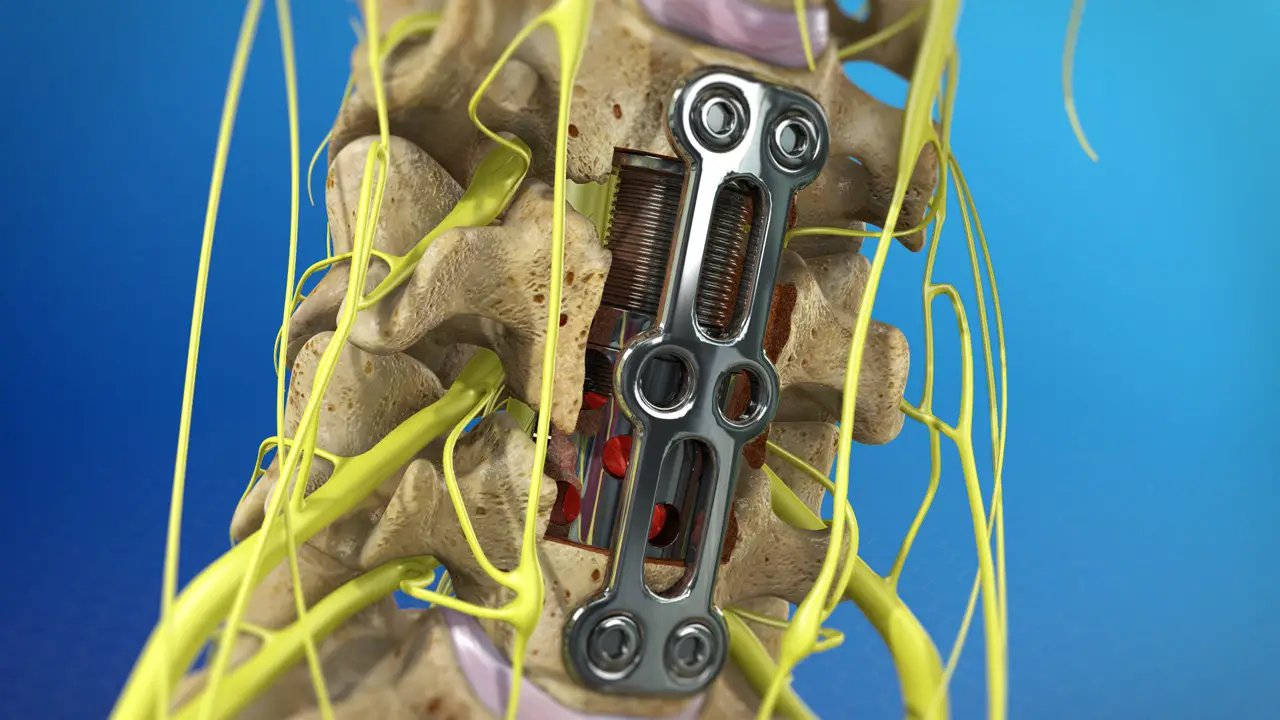If you feel any arm or leg pain, numbness, tingling, or weakness, you may be a candidate for a cervical foraminotomy.
This is surgery that decompresses the nerve roots of the spine. The objective of the operation is to relieve the pressure on the nerves and improve symptoms.
In this article, we will discuss the indications of a cervical foraminotomy and the surgical procedure itself.
Cervical Spine Anatomy
La cervical spine consists of seven small bones, called vertebrae. These bones are stacked on top of each other and are held together by strong ligaments. The vertebrae are separated by rubbery discs, which act as shock absorbers.
La spinal cord passes through the middle of the vertebrae, protected by a thin layer of tissue called the dura mater. The cervical spine is responsible for supporting the head and neck and allowing a wide range of motion. It also protects the spinal cord from injury.
The vertebrae of the cervical spine are numbered from C1 to C7, C1 being at the top and C7 at the low. The bones of the cervical spine are much smaller than those of the lower spine because they have to bear a lighter load.
The cervical vertebrae are stacked on top of each other and separated by soft discs. These discs allow the spine to move and absorb shock. The spinal cord passes through a canal located in the middle of each vertebrate and is protected by three layers of protective fabric: the dura mater, thearachnoid and the pia-mother.
The cervical spine is a flexible part of the body that allows us to move our head and shoulders in many directions. The spinal cord is a bundle of nerves that runs through the vertebrae and carries signals between the brain and the rest of the body.
What is cervical foraminotomy?
A cervical foraminotomy is a minimally invasive surgical procedure used to treat narrowing of the spinal canal in the neck. This condition, known as cervical stenosis, can cause pain, numbness, and weakness in the arms and legs.
A foraminotomy widens the space around the nerves by removing the bones and the tissues that compress them. This relieves pressure on the nerves and allows them to function more normally.
The procedure is usually performed through a small incision in the back of the neck. It can be performed using traditional surgical techniques or endoscopic technology. A cervical foraminotomy usually relieves symptoms and restores nerve function.
However, there is a risk of complications such as bleeding, infection, and nerve damage.
When is a foraminotomy necessary?
The main objective of the procedure is to relieve pressure on the nerves by widening the foramen, or bony passage, through which they exit. Foraminotomy is an outpatient procedure used to treat spinal conditions that compress the nerves as they exit the spine.
En relieving pressure on the nerves, foraminotomy may help improve nerve function and reduce pain. The procedure is usually performed under local anesthesia and most patients can go home the same day.
In some cases, however, a foraminotomy may be performed as part of a larger surgical procedure. In this case, patients usually stay in the hospital for a few days before leaving the hospital.
Overall, the foraminotomy is a safe and effective way to treat spinal conditions that cause nerve compression.
Indications for cervical foraminotomy
This treatment allows relieve pressure on the spinal cord or nerves. It is usually performed when other conservative treatments, such as physical therapy (physiotherapy) and pain medications, have failed to provide relief.
The objective of the surgery is to reduce pain et improve function. The procedure is most often indicated for patients who present with herniated disc, a degenerative disc disease or a spondylolisthesis.
In some cases, a cervical foraminotomy can also be used to treat a foraminal stenosis, a condition in which the openings through which the spinal cord and nerves pass become narrow.
Prior to the procedure, your doctor will perform a thorough evaluation to determine if you are a suitable candidate for this procedure. If you suffer from neck pain and other symptoms that affect your quality of life, you may be a suitable candidate for a cervical foraminotomy.
Contraindications and risks
Since all the surgical operations carry a certain degree of risk, it is important to be aware of the potential risks before undergoing any operation.
Minimally invasive surgery, although often touted as a safer option, nevertheless carries its own risks. It can be bleeding, infections, blood clots, nerve damage and anesthetic reactions.
In some rare cases, the operation may even fail and the patient may continue to experience persistent pain afterwards.
While it is always important to weigh the risks and benefits of any surgery before making a decision, it is especially crucial to be aware of the possible risks associated with the minimally invasive surgery.
You will be able to decide in full knowledge of the facts whether the intervention is suitable for you or not.
Convalescence
The recovery period after a surgical intervention, whatever it is, is called convalescence. This word comes from the verb Latin convalescere, which means " gain strength"
Regardless type of surgery you have undergone (minimally invasive or otherwise) you will need some time to recover and get stronger before resuming your usual activities.
According to the extent of the intervention, you may be able to go home the same day that you will need to stay in the hospital for a few days. Your surgeon will give you specific instructions on how to take care of yourself during your recovery.
A some pain and swelling at the incision are normal and can be controlled with ice and medication.
It is important to follow your surgeon's instructions and not push yourself too hard during this time. With a little rest and care, you will soon be back to normal.










